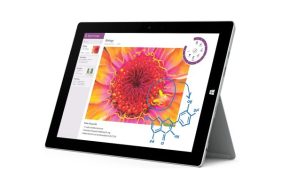Windows 10 has officially launched in over 190 countries today, and first impressions of Microsoft’s latest operating system are very positive.
With the OS being heralded as a massive improvement over Windows 8 and a concerted effort on Microsoft’s behalf to respond to many of the problems users had with their latest OS’s predecessor, it seems like Windows 10 is shaping up to be the milestone software that the company was shooting for.
Speaking to BBC News, Microsoft boss Satya Nadella said: “Windows 10 is a huge milestone for us as a company, and quite frankly the industry. It’s not just the release of a new Windows – it’s the beginning of a new era.”
So what will this new era entail? Well, for Microsoft it’s a bold step into a new direction, as the company have stated that they will no longer release new versions of Windows in the traditional sense. Instead, Windows 10 will receive incremental updates that will improve upon and add new features, rather than Microsoft releasing a Windows 11 a couple of years down the line.

Considering we have grown so accustomed to being able to download or obtain disc-based versions of Windows for so long now, this is undoubtedly a risky move for the company, but one that should prove to be successful. Windows 10 achieves a greater level of parity with other Microsoft devices than has ever been achieved before, with smartphones and the company’s Xbox One console all being built to support the OS. This means that Microsoft is heading in a direction very similar to that of Apple, by providing an ecosystem in which owners of one Microsoft product are encouraged to purchase more, due to enhanced functionality between the different software and hardware.
For the rest of us, Microsoft’s “new era” means no longer having to grow attached to an operating system, only to see its key features being ripped from under it in its next installment. Microsoft learned a lot from the launch of Windows 8, which tried to change the fundamentals of Windows considerably and ended up falling flat with previous users, and have decided that online updates rather than full Windows releases is the right path to go down.
“When we first unveiled Windows 10 in September, we outlined our plans for a new era of Windows,” Microsoft’s Terry Emerson wrote in a blog post. “We wanted to create a Windows that empowered people and organizations to do great things. Our vision was one platform, one store, and one experience that extends across the broadest range of devices from the smallest screens to the largest screens to no screens at all.”
He continued: “For Microsoft, Windows 10 begins to deliver on our vision for more personal computing. In this world experiences are mobile, moving with you seamlessly and easily across your devices. Interacting with technology is as natural as interacting with people – using voice, pen, gestures and even gaze for the right interaction, in the right way, at the right time. And in our connected and transparent world, we respect your privacy and help protect your information.”
It remains to be seen how many existing (and new) Windows users make the jump to Windows 10, but considering that initial coverage of the operating system has been uniformly positive, Microsoft will likely be expecting significant numbers of people to hop onto their new OS over the coming months.







